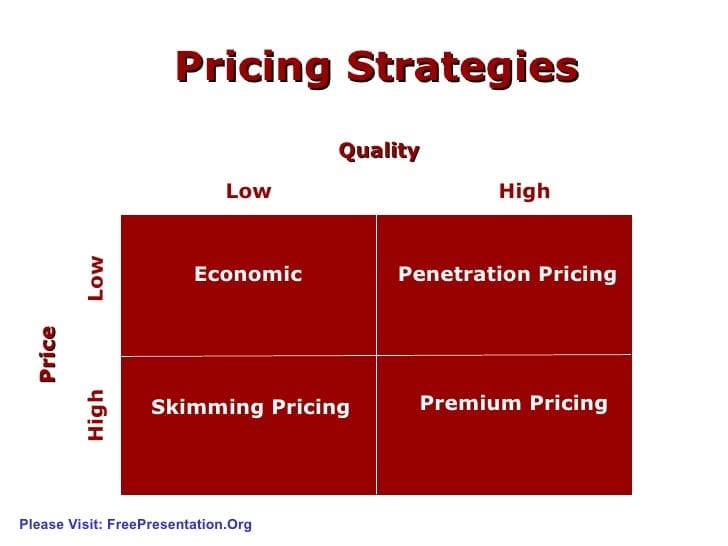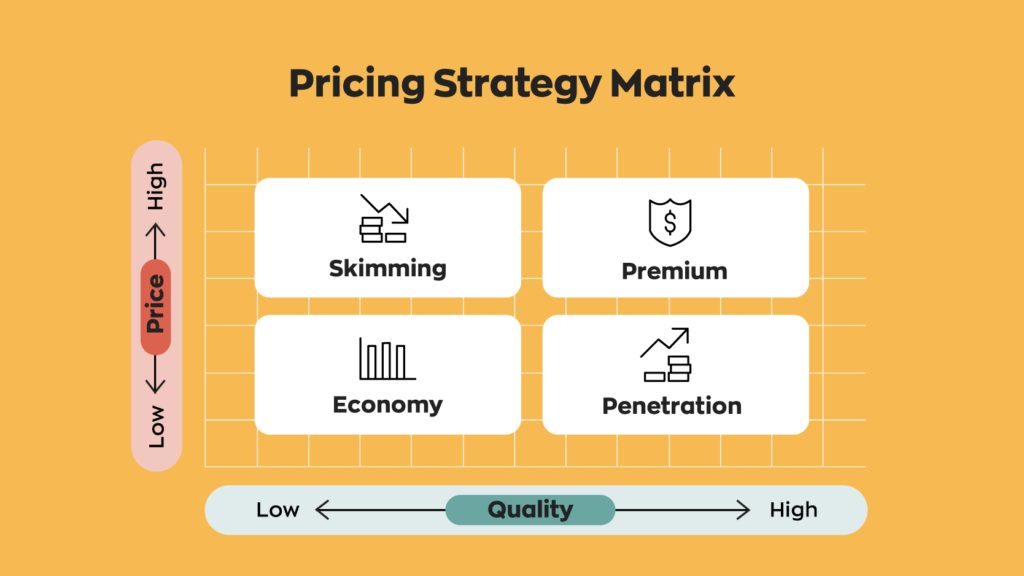The Duty of Emotional Pricing in Enhancing Your Pricing Strategy
The Duty of Emotional Pricing in Enhancing Your Pricing Strategy
Blog Article

Master Effective Pricing Techniques to Take Full Advantage Of Profit
In the ever-evolving landscape of business, grasping efficient prices methods is essential for companies intending to make best use of earnings. A nuanced understanding of rates psychology can dramatically influence customer habits and acquiring choices.
Recognizing Rates Psychology
Comprehending pricing psychology is critical for services aiming to enhance their pricing approaches. This area examines how customers perceive costs and how these assumptions affect their purchasing decisions. Secret principles in prices psychology include the anchoring effect, where the initial rate presented works as a referral factor for consumers, and the principle of rate level of sensitivity, which differs among different customer segments.
Furthermore, companies can leverage the idea of regarded worth, where the regarded benefits of a services or product can validate a greater cost factor. Costs rates can develop an aura of exclusivity, attracting customers that link greater rates with premium high quality. On the other hand, mental rates, such as setting a price at $9.99 as opposed to $10, can dramatically affect customer behavior by making rates show up extra eye-catching.
Moreover, shortage and necessity can boost the perceived value of products, motivating quicker acquiring choices. Recognizing these psychological triggers allows services to create prices strategies that not just drive sales but also foster client commitment. Therefore, grasping prices psychology is vital for efficient pricing technique formulation, leading to boosted earnings and market positioning.
Executing Value-Based Prices

Next off, section your clients based on their readiness to pay and the value they view. By doing so, you can tailor offerings and pricing strategies to align with various sectors.
After collecting insights, set costs that mirror the optimum amount a client wants to pay, making sure that they regard a reasonable exchange for the worth received. Communicate the value suggestion properly, highlighting the advantages and differentiators of your offering. Lastly, continuously keep track of market problems and client feedback to refine your prices method gradually - Pricing Strategy. By applying value-based prices, businesses can boost earnings while fostering long-term client commitment.
Checking Out Dynamic Rates Designs
In today's rapidly transforming market landscape, vibrant rates models have actually become a powerful technique for businesses seeking to maximize profits and react to fluctuations in need. These models allow business to adjust their rates in real-time based on different variables such as consumer behavior, market trends, and inventory levels. By leveraging data analytics and algorithms, companies can identify optimum rates points that optimize sales while continuing to be competitive.
Dynamic pricing can take numerous forms, consisting of time-based prices, where rates rise and fall based upon time of day or period, and demand-based rates, which adjusts rates according to current customer demand. This versatility not just enhances profitability however likewise boosts client contentment by our website supplying costs that reflect real-time market conditions.
Implementing vibrant prices calls for a robust technical framework and a deep understanding of client sections. Transparent communication about pricing adjustments can assist reduce consumer dissatisfaction and foster trust fund, ultimately leading to sustained success in a competitive market.
Analyzing Competitor Prices
Keeping track of rival rates is important for organizations intending to keep an one-upmanship in their respective markets. By examining competitors' rates strategies, firms can determine market patterns, comprehend consumer preferences, and adjust their pricing as necessary. This analysis includes gathering data on rivals' costs, advertising strategies, and product offerings to educate prices choices.
To effectively evaluate competitor rates, services need to utilize numerous devices and methods, such as price monitoring software program, marketing research reports, and customer feedback. This data can expose just how competitors position their product or services, enabling companies to differentiate their offerings or adopt similar approaches to remain relevant.
Additionally, it is vital to categorize rivals right into indirect and straight rivals. Direct competitors use comparable product and services, while indirect competitors may fulfill the same customer requirement with different solutions. Recognizing the subtleties in between these teams will enable businesses to customize their prices techniques extra effectively.
Inevitably, recurring rival pricing evaluation is essential for making enlightened rates choices. It allows services to stay active in response to market shifts, guaranteeing they can confiscate opportunities and minimize threats related to prices methods.
Examining Pricing Performance
Recognizing exactly how rival prices influences market characteristics brings about a natural focus on assessing rates performance within one's own organization. This analysis is critical for recognizing locations of stamina and opportunities for enhancement, eventually enhancing productivity.

Additionally, conducting normal rates audits can reveal inconsistencies between anticipated and actual efficiency. This entails contrasting prices information throughout different segments and channels to comprehend variations and determine trends. Additionally, integrating customer responses can offer insights right into viewed value versus actual prices, making certain placement with market assumptions.
Finally, leveraging data analytics devices can assist in deeper understandings into prices performance, allowing companies to make data-driven changes (Pricing Strategy). By continuously reviewing prices performance, organizations can adjust to market changes and optimize their techniques, making sure sustained earnings in a competitive landscape
Conclusion
Reliable prices strategies are essential for taking full advantage of profit in an open market. By leveraging rates psychology, companies can enhance regarded worth and tailor rates to diverse consumer sections. The adoption of dynamic and value-based rates models facilitates real-time adjustments based upon demand and customer desire to pay. Additionally, constant evaluation of competitor pricing and efficiency metrics makes certain calculated agility. Inevitably, a comprehensive method to rates not just drives earnings yet also promotes customer satisfaction and loyalty.
Recognizing pricing psychology is crucial for companies intending site web to optimize their pricing methods. Recognizing these mental triggers allows businesses to develop prices techniques that not just drive sales but additionally foster consumer commitment. Therefore, grasping pricing psychology is essential for effective pricing strategy formulation, leading to improved earnings and market positioning.
By examining competitors' prices strategies, companies can recognize market trends, comprehend customer preferences, and change their rates accordingly. By leveraging rates psychology, companies can enhance regarded worth and tailor pricing to diverse customer sectors.
Report this page